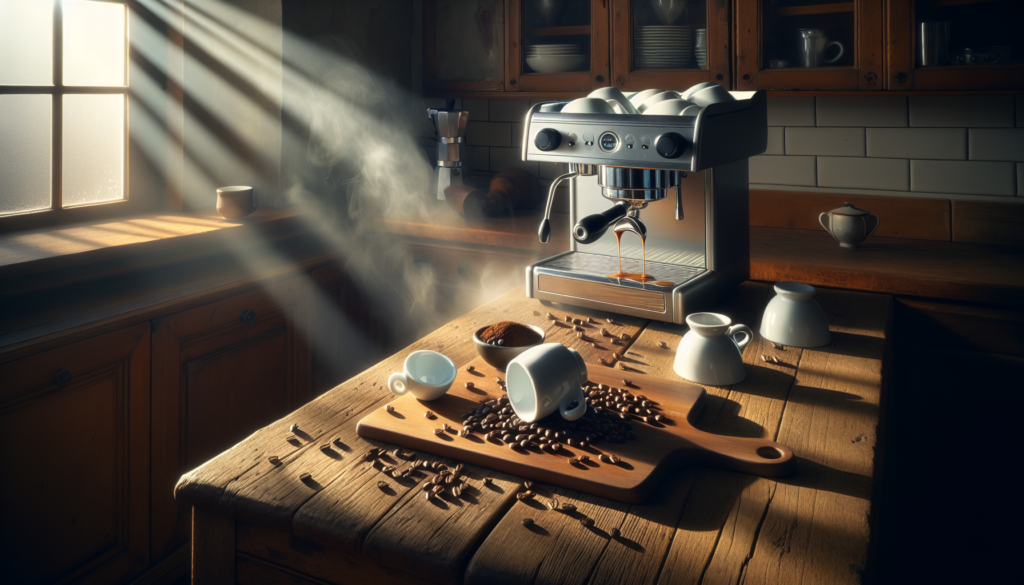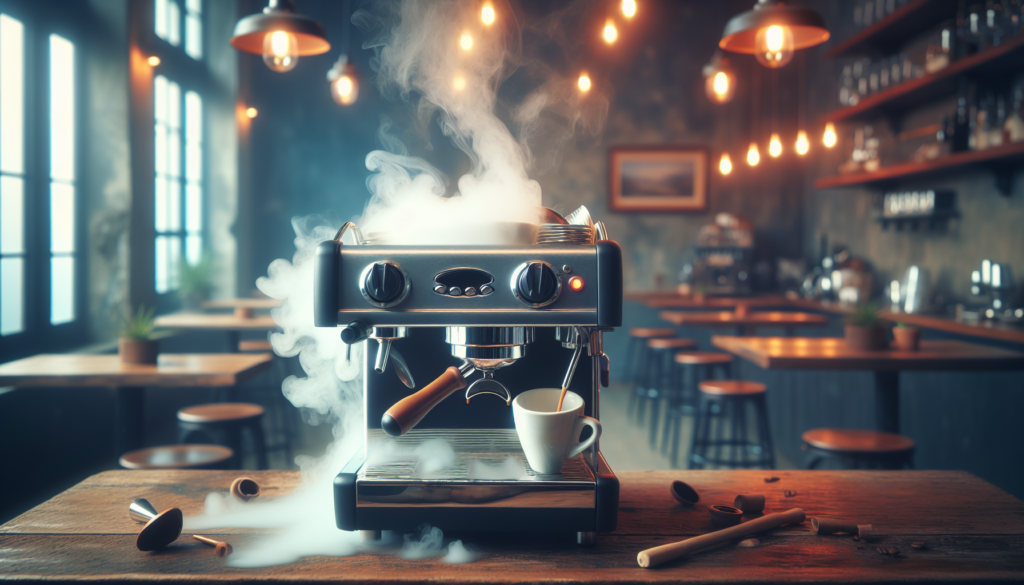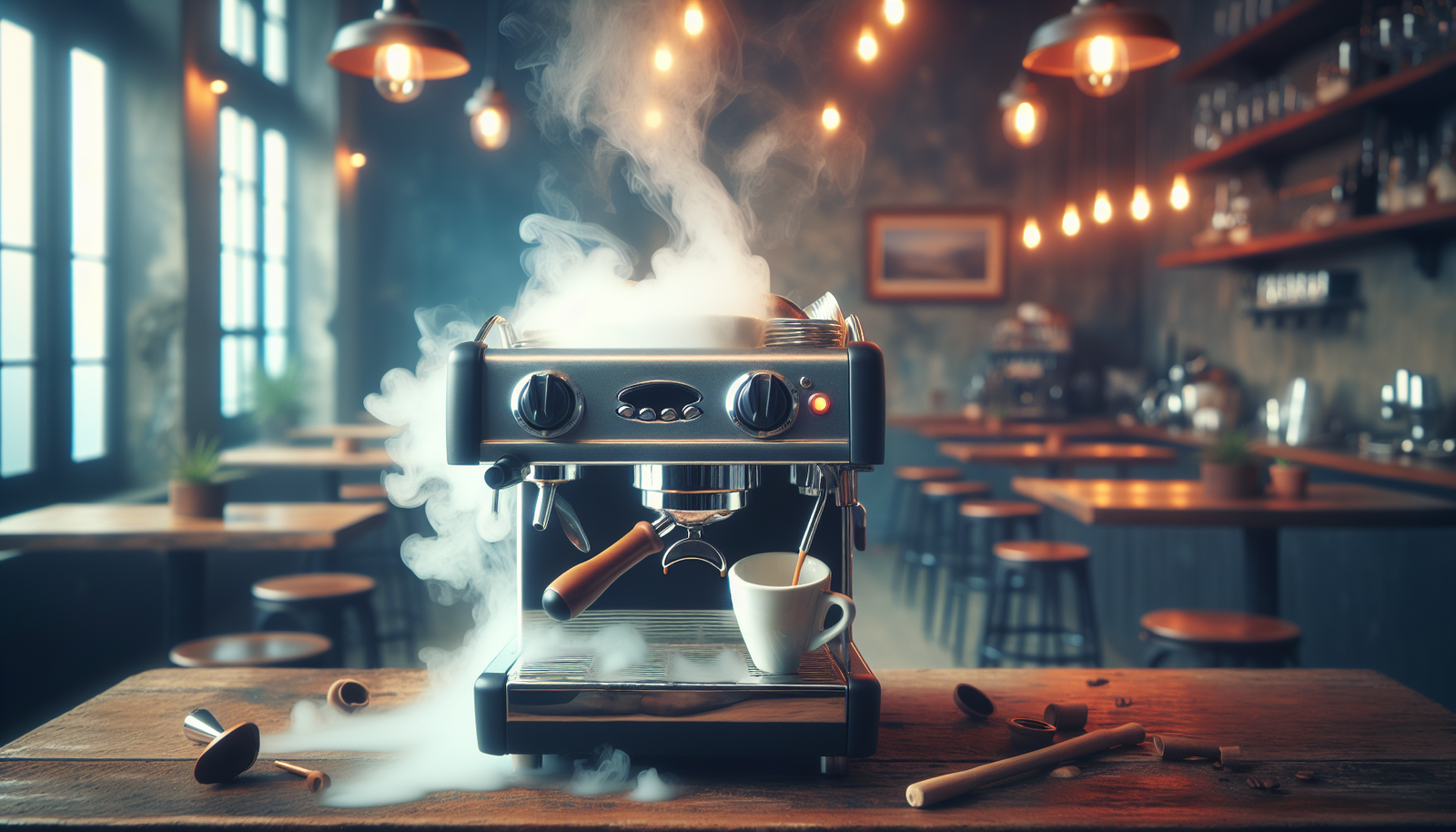So, you’ve decided to dive into the world of brewing espresso from beans – kudos to you! However, before you unleash your inner barista, it’s important to be aware of some common mistakes that can lead to a less-than-stellar cup of joe. From grinding your beans too fine to neglecting the importance of temperature, this article will guide you through the pitfalls to avoid when trying to achieve that perfect shot of espresso. So grab your favorite mug, get ready to discover the secrets of espresso brewing, and say goodbye to those less-than-ideal caffeine fixes!
Choosing the Wrong Coffee Beans
When it comes to brewing espresso, the choice of coffee beans can make or break your cup of coffee. One common mistake is using low-quality beans. These beans are often mass-produced and lack the rich flavor and complexity that you desire in your espresso. To avoid this mistake, it’s important to invest in high-quality, specialty coffee beans that have been carefully sourced and roasted.
Another mistake to avoid is using beans that are not fresh. Coffee beans are at their best within a few weeks of being roasted, as they start to lose flavor and aroma over time. Using stale beans will result in a lackluster cup of espresso. Make sure to check the roast date on the packaging and opt for beans that have been recently roasted.
Lastly, it’s important to consider the roast level of the beans. The roast level can greatly impact the flavor profile of your espresso. Some prefer a light roast for its bright acidity and fruity notes, while others prefer a dark roast for its rich and bold flavors. It’s crucial to choose beans with a roast level that aligns with your taste preferences.
Grinding the Beans Incorrectly
Grinding the coffee beans is a crucial step in the espresso brewing process. Unfortunately, many people make the mistake of using pre-ground coffee. Pre-ground coffee loses its freshness and flavor quickly, leading to a subpar cup of espresso. To truly enjoy the full potential of your beans, invest in a quality burr grinder and grind the beans just before brewing.
Another common mistake is grinding the beans too fine. When the coffee grounds are too fine, it can result in over-extraction, leading to a bitter and unpleasant taste. On the other hand, grinding the beans too coarse can result in under-extraction, resulting in a weak and watery espresso. It’s important to find the right grind size that allows for optimal extraction and balance.

Using the Wrong Water
Water is a primary ingredient in espresso, and using the wrong water can have a significant impact on the taste of your brew. Tap water often contains impurities and minerals that can affect the flavor profile of your espresso. For the best results, opt for filtered water to ensure a clean and pure taste.
Another mistake to avoid is using water that is too hot. If the water temperature exceeds the ideal range of 195-205°F (90-96°C), it can cause the coffee to extract too quickly, resulting in a bitter and over-extracted espresso. Using a thermometer or a kettle with temperature control can help you achieve the perfect water temperature every time.
Using hard water, which has a high mineral content, can also be detrimental to the taste of your espresso. The minerals can leave residue and build-up in your espresso machine, affecting the performance and flavor of your brew. Consider using bottled or distilled water if you have hard water in your area.
Incorrect Tamping Technique
Tamping is an essential step in preparing the espresso puck for brewing. However, there are a few common mistakes that many people make when tamping. One of them is under-tamping the coffee. When the coffee grounds are not compacted enough, the water will pass through too quickly, resulting in an under-extracted cup of espresso. Make sure to apply adequate pressure when tamping to achieve a level and firm puck.
On the other hand, over-tamping the coffee can also lead to issues. Over-tamping can make it difficult for water to pass through the puck, resulting in a slow and uneven extraction. It can also cause the espresso machine to struggle, potentially leading to damage. Finding the right balance and applying consistent pressure is key to achieving a properly tamped puck.
Consistency in tamping pressure is another crucial factor to consider. Inconsistency can lead to uneven extraction, resulting in a combination of over-extracted and under-extracted flavors in your espresso shot. Take the time to practice and develop a consistent tamping technique to ensure consistent and delicious espresso every time.

Incorrect Brewing Time
The brewing time of espresso plays a vital role in achieving the desired flavor and balance. One mistake to avoid is brewing the espresso too quickly. If the extraction time is too short, the flavors will not have enough time to fully develop, resulting in a weak and underwhelming cup of espresso. It’s important to allow the water to interact with the coffee grounds for the optimal amount of time.
On the other hand, brewing the espresso too slowly can lead to over-extraction. When the water spends too much time in contact with the coffee grounds, it can extract undesirable flavors, resulting in a bitter and unpleasant taste. Finding the right balance and adjusting the grind size and tamping pressure can help achieve the optimal brewing time.
It’s also crucial to follow the recommended brew time provided by the coffee bean roaster or manufacturer. Different coffee beans have different optimal brewing times to bring out their unique flavors and characteristics. Experimenting with different brew times can help you find the sweet spot that suits your taste preferences.
Improper Milk Frothing
If you enjoy milk-based espresso beverages such as lattes or cappuccinos, mastering the art of milk frothing is essential. However, there are a few common mistakes to avoid. One mistake is not using cold milk. Cold milk froths best, as the cold temperature creates better texture and allows for proper incorporation of air. Using warm or room temperature milk can result in a lackluster and thin layer of foam.
Overheating the milk is another mistake to avoid. When the milk is heated too much, it can scorch and develop a burnt flavor, which will overpower the taste of the espresso. It’s important to heat the milk to the ideal temperature range of 150-155°F (65-68°C) to achieve a creamy and smooth texture without any unpleasant flavors.
Not properly frothing the milk can also affect the quality of your milk-based espresso beverages. It’s important to position the steam wand correctly, submerge it just below the surface of the milk, and create a whirlpool motion to incorporate air evenly. With practice and patience, you can achieve velvety and luxurious microfoam that enhances the overall espresso experience.
Ignoring the Espresso Machine Factors
The espresso machine itself plays a significant role in brewing a perfect cup of espresso, and neglecting certain factors can lead to subpar results. One common mistake is incorrect temperature settings. If the water temperature is too low, it can result in under-extraction and a weak-tasting espresso. Conversely, if the temperature is too high, it can lead to over-extraction and a bitter and burnt taste. It’s crucial to calibrate and adjust the temperature settings of your espresso machine to achieve the perfect extraction.
Another factor to consider is the pressure settings of the espresso machine. The pressure during the extraction process affects the rate of water flow and the extraction of flavor compounds from the coffee grounds. If the pressure is too low, the extraction will be slow and under-extracted. If the pressure is too high, it can lead to over-extraction and a bitter taste. Understanding your espresso machine’s pressure capabilities and adjusting accordingly is essential for consistent and delicious espresso.
Proper maintenance of the espresso machine is also crucial. Neglecting regular cleaning and maintenance can lead to issues such as coffee residue buildup, clogged filters, and even machine malfunctions. It’s important to follow the manufacturer’s instructions for cleaning and maintenance to ensure optimal performance and longevity of your espresso machine.
Neglecting Cleaning and Maintenance
The cleanliness of your espresso equipment can greatly impact the taste and quality of your espresso. Neglecting to clean the espresso machine regularly can result in stale coffee oils and residue buildup, which can affect the flavors of your brew. It’s important to flush the group head, clean the portafilter, and wipe down the steam wand after each use. Regular cleaning ensures that your espresso machine is ready to brew delicious espresso every time.
Descaling the espresso machine is another important maintenance task that should not be neglected. Over time, minerals from the water can build up in the internal components of the espresso machine, affecting the performance and taste of your espresso. Descaling helps remove these mineral deposits and ensures that your machine continues to function properly and brew great-tasting espresso.
In addition to cleaning the espresso machine, it’s crucial not to overlook cleaning the grinder. Coffee oils and residue can accumulate inside the grinder, which can affect the grind consistency and result in a subpar cup of espresso. Regularly cleaning the grinder burrs and hopper ensures that your coffee grounds are fresh and flavorful.
Skipping the Pre-warming Step
Pre-warming is an often overlooked step in the espresso brewing process, but it can make a significant difference in the temperature and extraction of your espresso. One mistake to avoid is not pre-warming the espresso cups. Cold cups can quickly cool down your espresso, resulting in a less-than-ideal drinking temperature. Simply rinsing the cups with hot water or placing them on top of the espresso machine can help maintain the optimal temperature of your brew.
Similarly, not pre-heating the espresso machine can lead to temperature fluctuations during the brewing process. Espresso machines require time to reach their optimal operating temperature, and skipping this step can affect the extraction and taste of your espresso. Make sure to pre-heat the machine according to the manufacturer’s instructions to ensure consistent and delicious results.
Skipping the pre-infusion process is another mistake to avoid. Pre-infusion involves saturating the coffee grounds with a small amount of water before the full extraction begins. This step allows for better bloom and extraction, resulting in a more balanced and flavorful espresso shot. Utilizing the pre-infusion feature on your espresso machine or manually pre-infusing can greatly enhance the taste and quality of your espresso.
Lack of Proper Technique and Practice
Brewing great espresso requires skill, technique, and practice. There are a few common mistakes to avoid in this aspect. One is not weighing the coffee. Using inconsistent amounts of coffee can lead to inconsistent results in terms of taste, strength, and extraction. Weighing your coffee grounds ensures accuracy and consistency in each brew, allowing you to achieve the desired flavor and balance.
Inconsistent tamping technique is another mistake to watch out for. As mentioned earlier, inconsistent tamping pressure can result in uneven extraction and a combination of over-extracted and under-extracted flavors. Taking the time to develop and practice a consistent tamping technique is key to achieving consistent and delicious espresso.
Not properly timing the shots is another common mistake. Keeping track of the extraction time is crucial in determining the optimal brewing time and adjusting variables such as grind size and tamping pressure. Using a timer or a stopwatch can help you identify the sweet spot for your espresso shots.
In conclusion, brewing espresso from beans requires attention to detail, proper technique, and a willingness to practice and experiment. By avoiding common mistakes such as choosing the wrong coffee beans, grinding incorrectly, using the wrong water, tamping improperly, brewing for the wrong amount of time, frothing milk improperly, ignoring espresso machine factors, neglecting cleaning and maintenance, skipping the pre-warming step, and lacking proper technique and practice, you can ensure that you consistently brew delicious espresso that satisfies your taste buds. So go ahead, grab your favorite beans, and embark on the journey to brewing the perfect cup of espresso. Happy brewing!

